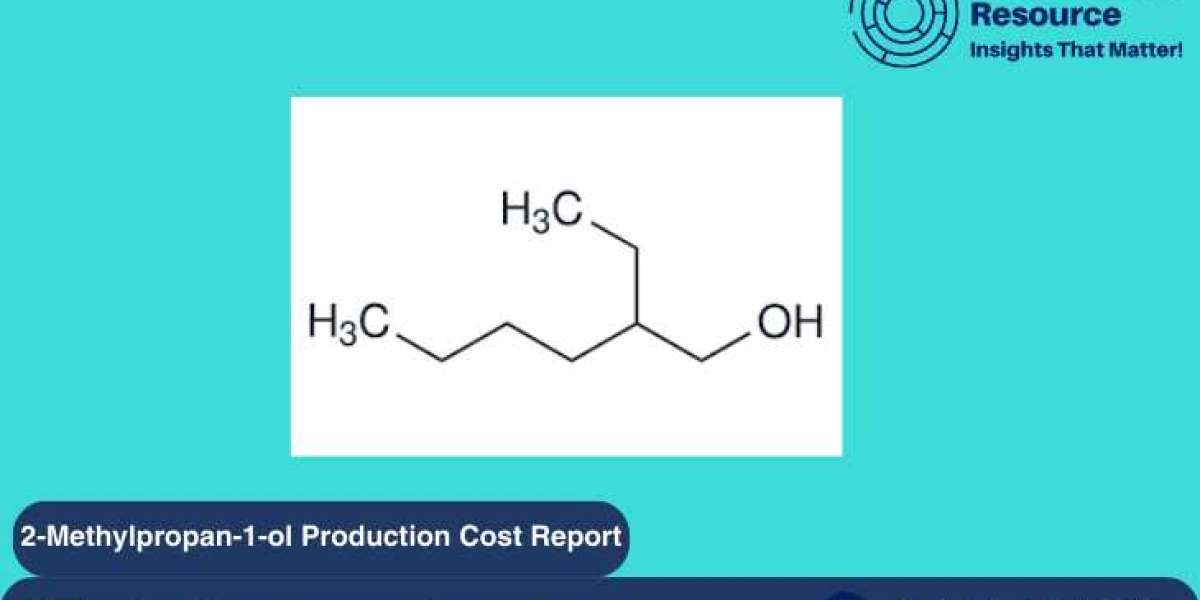2-Methylpropan-1-ol, also known as isobutanol, is a valuable chemical used in various industries, including chemicals, pharmaceuticals, and as an intermediate in the production of other chemicals. It is primarily produced via the fermentation of glucose or the hydroformylation of propylene. Given its widespread use and demand, understanding the production cost of 2-Methylpropan-1-ol is crucial for companies involved in its manufacturing, supply, and utilization. In this article, we will discuss the factors affecting the 2-Methylpropan-1-ol production cost, focusing on a comprehensive 2-Methylpropan-1-ol production cost report.
What is 2-Methylpropan-1-ol (Isobutanol)?
2-Methylpropan-1-ol is a branched-chain alcohol, typically used as a solvent in paints, coatings, adhesives, and varnishes. It is also used as a feedstock for producing other chemicals, such as isobutyl acetate, a solvent in various industrial applications. Additionally, 2-Methylpropan-1-ol is employed in the manufacture of pharmaceuticals, fragrances, and plasticizers, making it an essential commodity for several industries worldwide.
The Need for a Detailed 2-Methylpropan-1-ol Production Cost Report
An extensive 2-Methylpropan-1-ol production cost report is crucial for manufacturers, investors, and stakeholders who wish to understand the financial aspects of 2-Methylpropan-1-ol production. The report provides insights into the costs involved in production, including raw material expenses, labor charges, utilities, logistics, and supply chain dynamics. By analyzing these factors, businesses can make informed decisions regarding production processes, pricing strategies, and overall profitability.
Request a Free Sample - https://www.procurementresource.com/production-cost-report-store/2-methylpropan-1-ol/request-sample
The report typically covers multiple cost components, from feedstock procurement to final product distribution, and provides a cost model that can be tailored for different production scales.
Key Components of the 2-Methylpropan-1-ol Production Cost Report
- Cost Model
The cost model is the foundation of the production cost report. It outlines the direct and indirect costs associated with the production of 2-Methylpropan-1-ol. Direct costs include raw materials, labor, utilities, and other production-specific expenditures. Indirect costs might include administrative overheads, marketing, and distribution costs.
In general, the cost model for 2-Methylpropan-1-ol production follows a tiered structure based on economies of scale, production capacity, and geographic location. The cost model is crucial for companies looking to estimate production expenses under varying scenarios and to compare them with industry benchmarks.
- Pre-feasibility Study
A pre-feasibility study is an important aspect of the 2-Methylpropan-1-ol production cost report. It evaluates the technical and economic viability of the production process before large-scale investment or operations begin. The pre-feasibility study assesses factors such as:
- Availability of raw materials
- Energy consumption and efficiency
- Technological infrastructure required
- Investment needs and expected returns
By examining these elements, companies can determine the potential risks and rewards of entering the 2-Methylpropan-1-ol market. It helps businesses decide whether to proceed with full-scale production or explore alternative production methods.
- Industrial Trends
Industrial trends play a vital role in shaping the cost dynamics of 2-Methylpropan-1-ol production. Factors such as technological advancements, the adoption of green production methods, and changes in demand for end products influence the production cost. For instance, the move toward renewable feedstocks and biotechnological processes can reduce the environmental impact but may require higher capital investments.
Moreover, shifting trends in global trade and industrial growth can affect the supply-demand equilibrium, potentially increasing or decreasing prices for raw materials like propylene or glucose. Keeping track of these industrial trends allows businesses to anticipate shifts in production cost and adjust their strategies accordingly.
- Labor Charges
Labor charges are a significant component of the production cost for 2-Methylpropan-1-ol. Skilled labor is necessary for operating machinery, maintaining production lines, and ensuring quality control. In regions with higher labor costs, such as developed nations, these charges can account for a larger share of the overall production cost. Conversely, in areas with lower labor costs, companies can benefit from more competitive pricing.
The type of workforce involved, the level of automation in the production process, and local wage regulations all influence labor charges. A detailed analysis of labor costs helps manufacturers optimize staffing requirements, plan training programs, and forecast labor-related expenses.
- Utilities
The production of 2-Methylpropan-1-ol is energy-intensive, particularly when using processes such as hydroformylation or fermentation. Utilities, including electricity, water, and natural gas, are essential for powering reactors, maintaining temperature controls, and supporting various processes. Utility costs can fluctuate depending on the local market conditions and the efficiency of the production setup.
In many regions, energy costs make up a significant portion of the total production cost. Therefore, businesses need to assess energy consumption patterns and explore options for improving energy efficiency or utilizing renewable energy sources. A comprehensive production cost report will analyze utility usage patterns, energy-saving techniques, and how fluctuations in energy prices can impact overall costs.
- Logistics and Supply Chain
The logistics and supply chain play a critical role in determining the final cost of 2-Methylpropan-1-ol. These costs encompass the transportation of raw materials, the storage of intermediate products, and the distribution of the final product to various markets. The supply chain may also include the sourcing of equipment, packaging, and labeling materials.
Factors such as geographic location, transportation infrastructure, and global supply chain dynamics can influence logistics costs. Disruptions in the supply chain, such as fuel price hikes or trade restrictions, can lead to unexpected increases in production costs. A thorough analysis of these variables in the cost report will provide manufacturers with an accurate picture of the external factors impacting their operations.
Request a Free Sample
For those looking to explore a 2-Methylpropan-1-ol production cost report in greater detail.
Request Your Free Sample Report - https://www.procurementresource.com/production-cost-report-store/2-methylpropan-1-ol/request-sample
Contact Us:
Company Name: Procurement Resource
Contact Person: Tom Hanks
Email: sales@procurementresource.com
Toll-Free Number: USA Canada - Phone no: +1 307 363 1045 | UK - Phone no: +44 7537171117 | Asia-Pacific (APAC) - Phone no: +91 1203185500
Address: 30 North Gould Street, Sheridan, WY 82801, USA











